
Take your Git practice to the next level
Baptiste Mathus <batmat@batmat.net>, Michaël Pailloncy <michael.pailloncy@gmail.com>
About us
Working Together @MiPih as ToolSmiths |
|
#jenkins #java #maven #nexus #sonarqube #build #docker #passion
Agenda
This is a workshop. So there will be manipulation, don’t worry !
- Some History
- The Git Data Model
- Understanding the .git directory
Basic concepts & commands reminder
- Merge vs. Rebase
- What’s a Fast-Forward?
- The Working Copy, The Index And The Commit
- Reviewing (and rewriting) changes
- Tips & tricks
Repository lifecycle
- granularity
- aggregate
- split
- EGit & JGit
Git workflows discussion
- Git flow
- Gerrit
Some History
- 1991 → 2002 : Linux development uses tarball
For the first 10 years of kernel maintenance, we literally used tarballs and patches, which is a much superior source control management system than CVS is – Linus TorvaldsLinus Torvalds
- 2002 → April 2005 : Using BitKeeper
Closed-source DVCS. Free licenses provided to the project.
⇒ Revocation triggered by Andrew Tridgell’s BitKeeper protocol reverse-engineering
- 7, April 2005 : First version of Git
I’m an egotistical bastard, and I name all my projects after myself. First Linux, now git.Linus Torvalds
Basics
- DVCS
- Decentralized
- Technically, no server required
Whole project history present locally
- Only pushing & fetching new commits requires network
Fast, Git ?
- Performances, the origins
If it takes half a minute to apply a patch […] then a series of 250 emails […] takes two hours.
- Content oriented
- Storing snapshots, not deltas
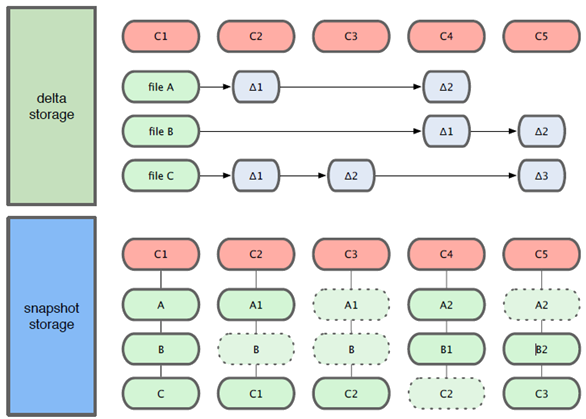
The Index
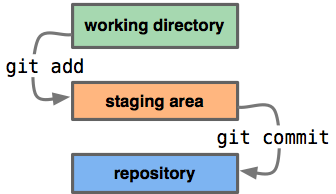
- add
-
adds to the index (-p lets you choose the parts of your file you actually want to add)
- index
-
staging area (a sweet place to lovingly craft your commits)
- commit
-
Captures the state of the index.
Quiz: git add
echo "dingdingdingbabababaaaaa" >> theFile # (1)
git add theFile
echo "blah" > theFile # (2)
git commit -m "done"Right answer: (1) |

|
(note: difference with svn ⇒ (2)) |
Let’s dig a bit deeper now
Git Data Model: The 4 Object Types
- blob
-
File content, identified by a hash
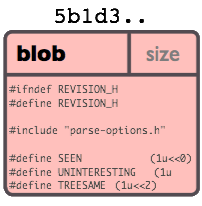
- tree
-
List of pointers to blob, or tree, identified by a hash

- commit
-
References the (root) tree + metadata, 0 to n parent commits, identified by a hash
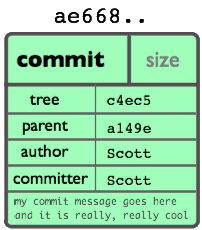
Identified by a SHA-1 hash :
|
Possibly: Author ≠ Committer |
DAG : Directed Acyclic Graph |
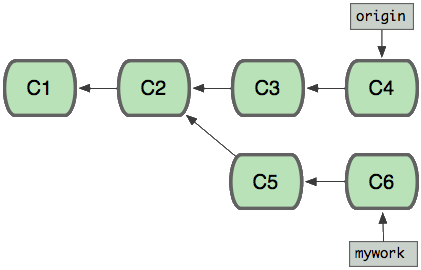
|
- tag
-
Name associated with a commit (+ potential metadata)

Git Data Model : wrap up

Back to basics
Step back
Quiz: what does this?
$ git init pouet && cd pouet
$ git commit -m "initial commit" --allow-empty
$ echo abc > .git/refs/heads/pafCreates a branch! That’s right!
$ git init pouet && cd pouet
$ git commit -m "initial commit" --allow-empty
$ echo abc > .git/refs/heads/paf
$ git branch
* master
paf
So… What are branches again?
Git branches
- Simple pointer to a given commit (symlink, kind of)
- Git only references heads
Unreferenced commits will be garbaged eventually
- Dangling or detached HEAD
- Each time you rebase (without fast-forward)
Pointers?
HEAD: shorthand to the latest commit of the current branchHEAD~N: N commit before the last one- (N=1 if omitted)
master(or any branch): automatically bumped when new commit is done on it
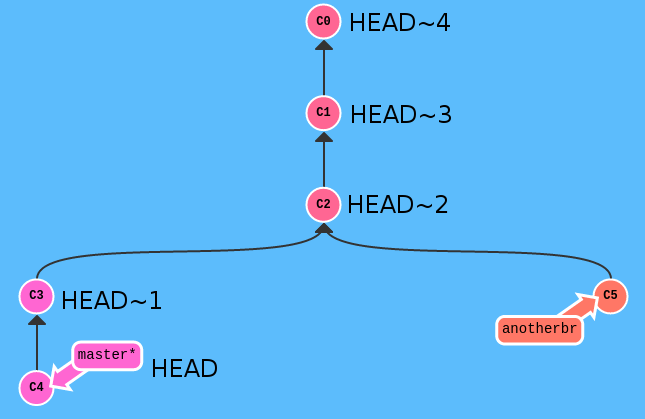
Resetting
git reset [--soft|--mixed|--hard] <TARGET>
- Works on the current branch pointer.
|

|
Example:
git reset HEAD~- Latest commit becomes the previous one (kind of: HEAD=HEAD~).
- Index is empty
- Working copy is intact
Example:
git reset --hard HEAD~2- HEAD=HEAD~2
- Index is empty
- Working copy at the HEAD~2 state (any uncommitted change is lost)
Merge vs. Rebase
What is it? How to choose one or another?
What do you want to do?
Step back, what do you want to actually do?
Git lets you express what you did.
Correction
Git lets you express what you wanted to do.
Here’s what it’s all about:
Good SCM history reveals intentions.
Like good code.
OK, back to Merge vs. Rebase
What you want to express :
- Rebase
-
when you don’t want your local history to be seen as side/sub-work
- Merge
-
it was side/sub-work
Git Rebase!
Rebase
(on feature) git rebase master
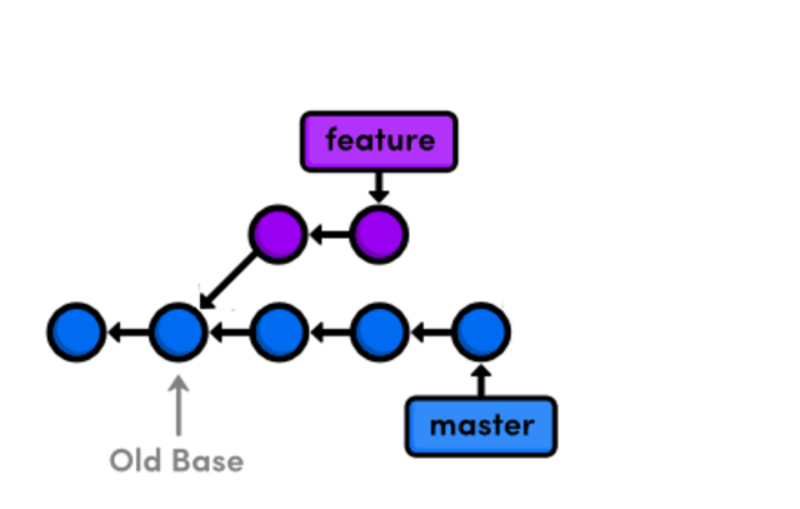
Rewinding:
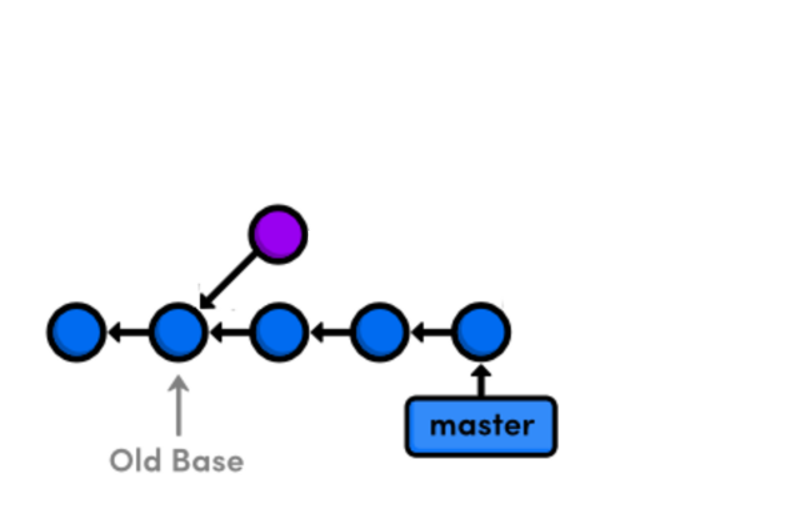
Rewinding:

Replaying:
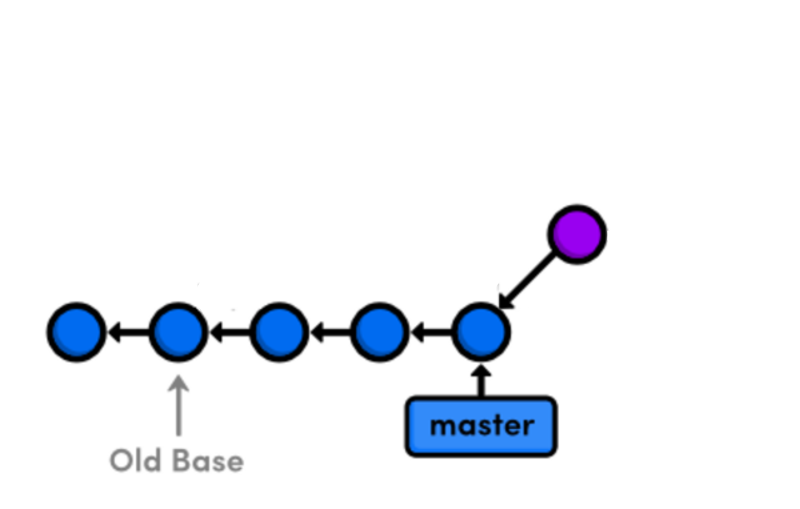
Replayed:
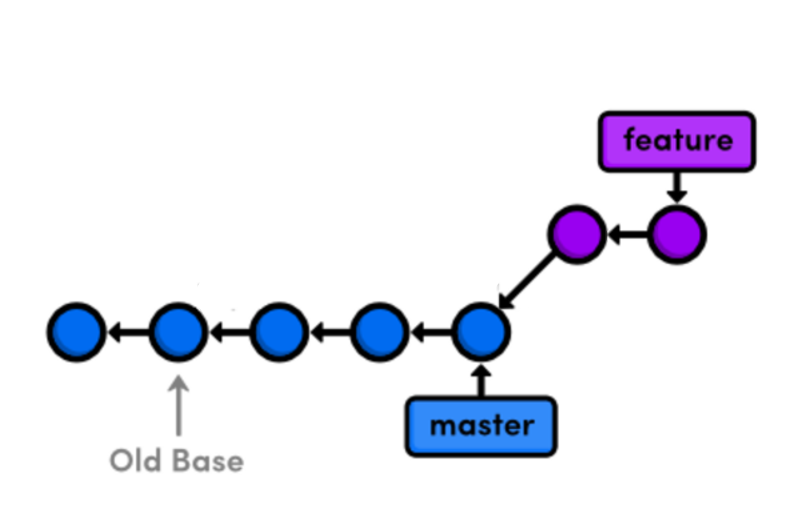
Rebased:
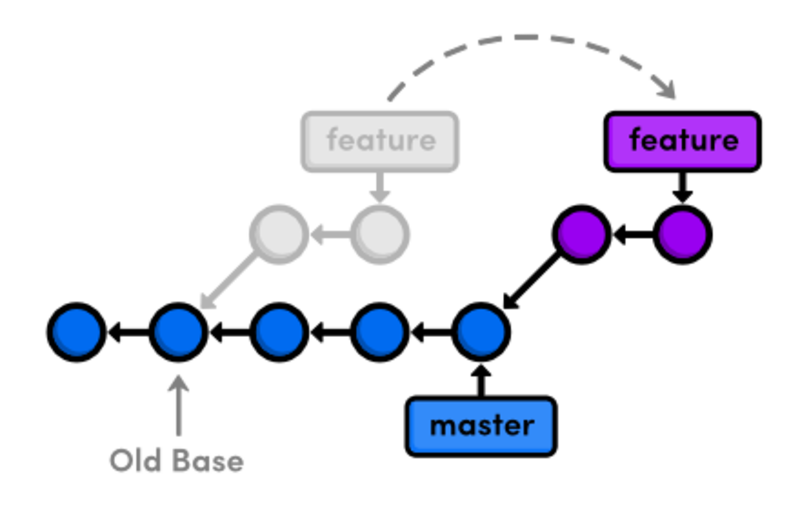
Merge
(on master) git merge feature

After (merge commit created):

Fast-Forward — Remember pointers?
- When possible, Git will NOT create merge-commits and just
fast-forward: bumping the branch pointer - You can prevent it using the
git merge --no-ffoption

Using Merge |
Using Rebase |
|
|
Tips & tricks
Git reflog can save your a$$: keeps track of everywhere you went by

Example:
$ git reflog
f7d3b1 HEAD@{0}: commit (amend): Added reset + compulsory lolcat
440a3bf HEAD@{1}: commit (amend): Added reset + details
c830885 HEAD@{2}: commit: Ajout reset
36b4dce HEAD@{3}: commit: Passe sur les ajustements: ff, intro...
5ef0aa8 HEAD@{4}: commit (amend): On sa mis dacor
8e51635 HEAD@{5}: rebase -i (finish): returning to refs/heads/master
8e51635 HEAD@{6}: rebase -i (fixup): On s'a mis dacor
b6d8c99 HEAD@{7}: rebase -i (pick): On s'a mis dacorWhat if you know you introduced a bug between one commit and another?
But there’s 1000 commits between them?
How to find out the offending one?
- Git bisect: search bug by dichotomy (binary search)!
Repository lifecycle & manipulations
Granularity
One repository, one lifecycle.
- One version number
- If many parts, everything released each time
How to aggregate many repositories afterwards? Just merge!
git init repo1 && cd repo1 && git commit -m "Initial 1" --allow-empty && cd ..
git init repo2 && cd repo2 && git commit -m "Initial 2" --allow-empty
git remote add other file://$PWD/../repo1
git fetch other
git merge other/master -m "let's merge them"git log --oneline --graph
* c2be901 let's merge them
|\
| * 1763514 Initial 1
* 8208b0a Initial 2How to explode one repository into multiple ones, remove some file from all commits…
filter-branch is your friend.
EGit & JGit
- EGit is the Git Plugin for Eclipse
- JGit is the library in pure Java implementing the Git Version Control System
EGit has been pretty buggy in the past, but now has become definitely usable.
Even supports some of the features where GUI actually makes a lot of sense: staging interactively the lines you want.
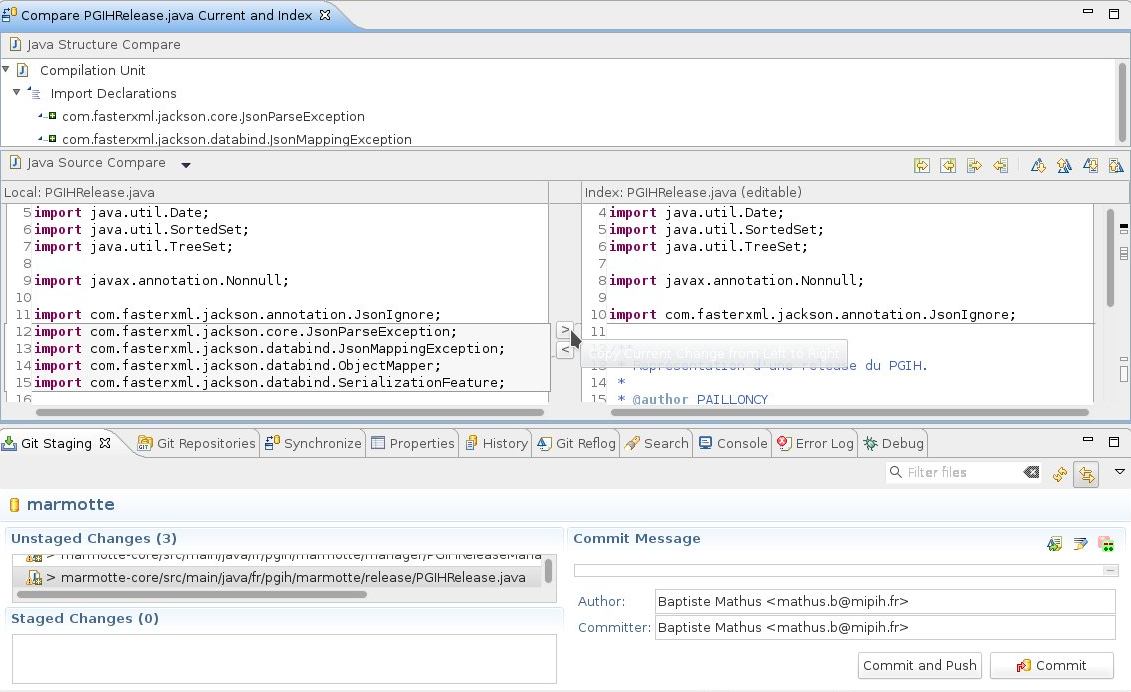
JGit provides (among others) a fluent API to interact with Git repositories:
Git.cloneRepository()
.setDirectory("/path/to/git/repository")
.setURI("git://gitserver/somerepo.git")
.setBare(false)
.call();Git.open("/some/repository")
.fetch()
.setRemoveDeletedRefs(true)
.setTagOpt(TagOpt.FETCH_TAGS)
.call();Enough talk, let’s practice!
Conclusion & Recommentations
- Git can be simple when used like Subversion
- But can become complex to master when using it thoroughly
- In case of errors or just logs, really read the output!
- With Git, always know where you’re in the graph and what you want to do
Tell me and I forget, teach me and I may remember, involve me and I learn.Benjamin Franklin
References & useful links
- http://ndpsoftware.com/git-cheatsheet.html
- https://training.github.com/
- Great tool for learning & understanding Git: http://pcottle.github.io/learnGitBranching/
- Repository layout
- Special thanks to Scott Chacon for many illustrations reused here
- Comprehensive article from Alex Blewitt about the different ways to embed JGit

/

